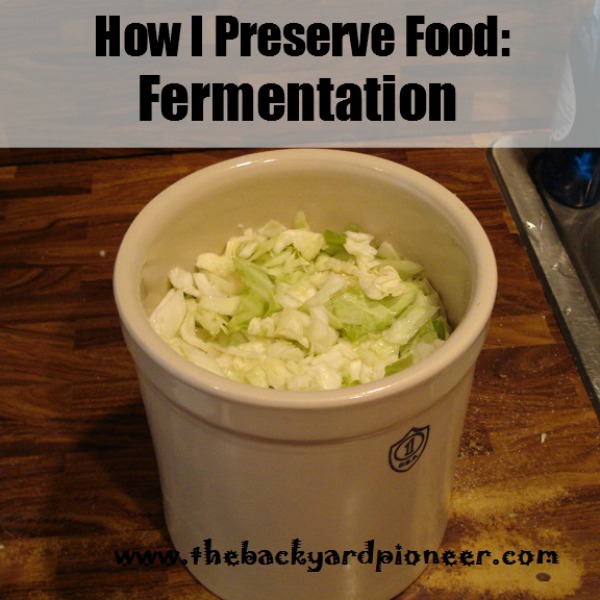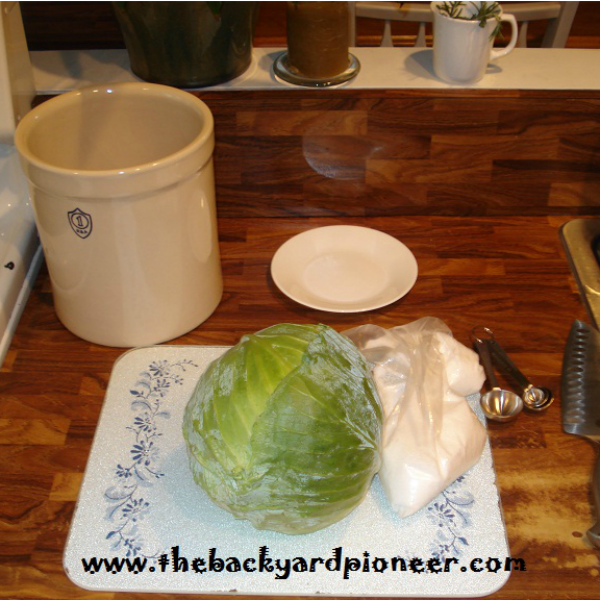The Forgotten Preservation Method
Fermentation is one of Man’s oldest methods of food preservation, and in the modern era of factory food it is slowly being relegated to a purely artisinal role. But for the Homesteader/Prepper who takes the time to learn the ancients secrets, fermentation can be come a valuable tool.
Fermentation helped to conquer scurvy, which had ravaged seaman for centuries. Captain James Cook took huge quantities of sauerkraut on his many journeys. In fact on his second around the world trip he took 60 barrels of the fermented cabbage with him. These barrels lasted for 27 months and not a single crew member was lost to the dreaded disease.
What Is Fermentation?
Fermentation in food preservation is the conversion of sugars amd other carbohydrates in to organic acids.
Food fermentation has been said to serve five main purposes:[12]
- Enrichment of the diet through development of a diversity of flavors, aromas, and textures in food substrates
- Preservation of substantial amounts of food through lactic acid, alcohol, acetic acid, and alkaline fermentations
- Biological enrichment of food substrates with protein, essential amino acids, and vitamins
- Elimination of antinutrients
- A decrease in cooking time and fuel requirement
The introduction and cultivation of these organics acids are what gives fermented foods their distinctive bite.
How Can Fermentation Work For You?
Fermentation of foods works very well at the kitchen level, and unlike other forms of home food preservation there is no costly equipment to buy outside of a fermenting crock and some Kosher Salt. Fermentation can help transform the garden’s bounty into something tasty and long lasting.
How To Get Started With Fermentation
Getting started with fermented foods is very easy. Sauerkraut is one of the easiest things to make at home and only has two ingredients, cabbage and salt, that is it. With some careful attention to detail and good food preparation protocol you can be enjoying homemade sauerkraut in just a few weeks!
Making Traditional Sauerkraut At Home
Ingredients
- 5 Pounds of Cabbage, grated or chopped
- 3 Tablespoons of Kosher Salt
The Tools
The Process
- Grate or chop the cabbage into pieces that are to your liking.
- Working in small bites start layering the cabbage and salt into the fermenting crock. Jam the cabbage down tight with your fist. This mechanical process will start the task of withdrawing the water from the cabbage. Place a clean towel over the crock and put it in an accessible place where you won’t forget about it.
- When all the would be sauerkraut is in the crock place the weight on top. Over the course of the next 24 hours press down firmly on the weight whenever you thin about it. If after 24 hours the cabbage has not leached out enough water for it all to be submerged, pour salt water (1 Cup : 1 Tablespoon Kosher Salt) over it to cover the ‘kraut.
- Keep the weight on the ‘kraut and check it every other day to make sure that it is staying below the liquid. If you encounter any mold growing on the surface carefully spoon it out. It does happen from time to time. The ‘kraut is safe in it’s highly acidic environment just below the surface.
- After 2-4 enjoy your homemade sauerkraut! It will last if kept in a cool area, and if you carefully make sure it is all covered by the brine each time you take some out. The ‘kraut will gradually lose it’s crispness and flavor as it ages. A larger crock that is cared for can easily last the Winter and into early Spring. If you are ever in doubt about it don’t eat it!
Wild Fermentation: The Flavor, Nutrition, and Craft of Live-Culture Foodsis my go to resource for home food fermenting!

Join us as we share different reasons and methods of how we preserve food to create a long-term storage plan for our families. Click on each link to be taken to a new blog with helpful information and tips.
Mom with a PREP – How to Dehydrate Ginger and Make Ginger Powder
Preparedness Mama – Make Jam Without Pectin
Mama Kautz – Dehydrating
Busy B Homemaker – Freezer Jam
Ed That Matters – Anyone Can Do It: Fool Proof Food Storage
The Apartment Prepper – Easy Marinated Mushrooms
The Homesteading Hippy – How to Use Your Pressure Canner
Montana Homesteader – Making and Preserving Cherry Pit Syrup
Are We Crazy or What – How to Dehydrate Cherries
Your Thrive Life – How I Preserve Food: Meals in a Jar
Melissa K Norris – Re-Usable Canning Tattler Lids-Do They Really Work?
Real Food Living – Preserve and Store Grains wiith Dry Ice
Cooke’s Frontier – Smoking
Homestead Dreamer – Water Bath Canning
Evergrowing Farm – How to Preserve Red Chile
Survival Sherpa – Modern Mountain Man MRE’s
The Backyard Pioneer – Fermentation
Trayer Wilderness – How We Preserve Food
Living Life in Rural Iowa – Vegetable Soup
The Organic Prepper – How to Make Jam without using added Pectin
Homesteading Mom – How I Preserve Broccoli and Goat Cheese Soup
A Matter of Preparedness – How I Preserve Using Mylar Bags
Affiliate Disclosure: I am grateful to be of service and bring you content free of charge. In order to do this, please note that when you click links and purchase items, in most (not all) cases I will receive a referral commission. Your support in purchasing through these links enables me to keep the content train rolling








Nice guide, I am a huge fan of the Korea Kimchi which I guess follows a similar process. I’ll give this a shot when I am feeling adventurous.
Love home made sauerkraut! This fall, I’ll definitely be trying out other veggies.